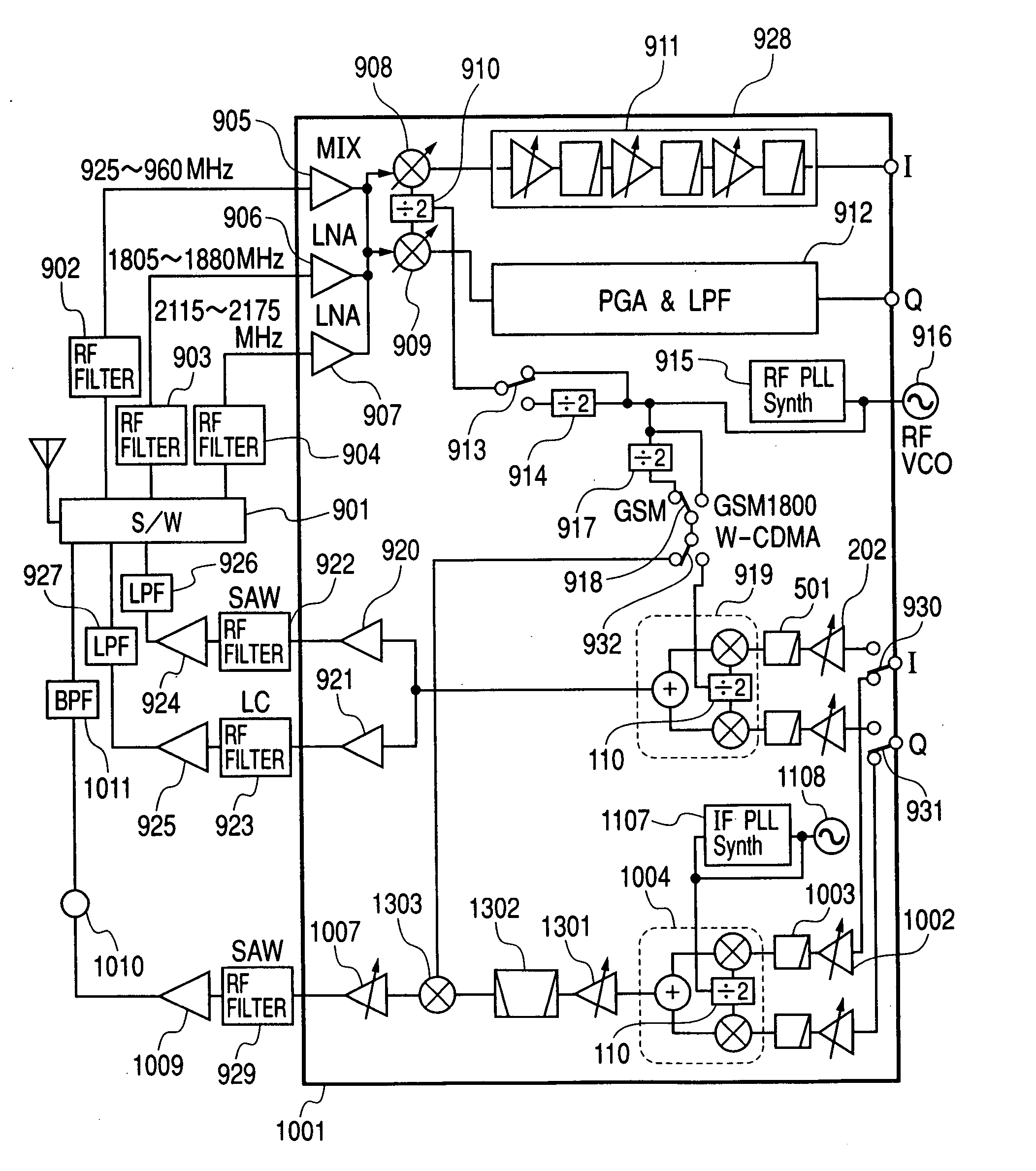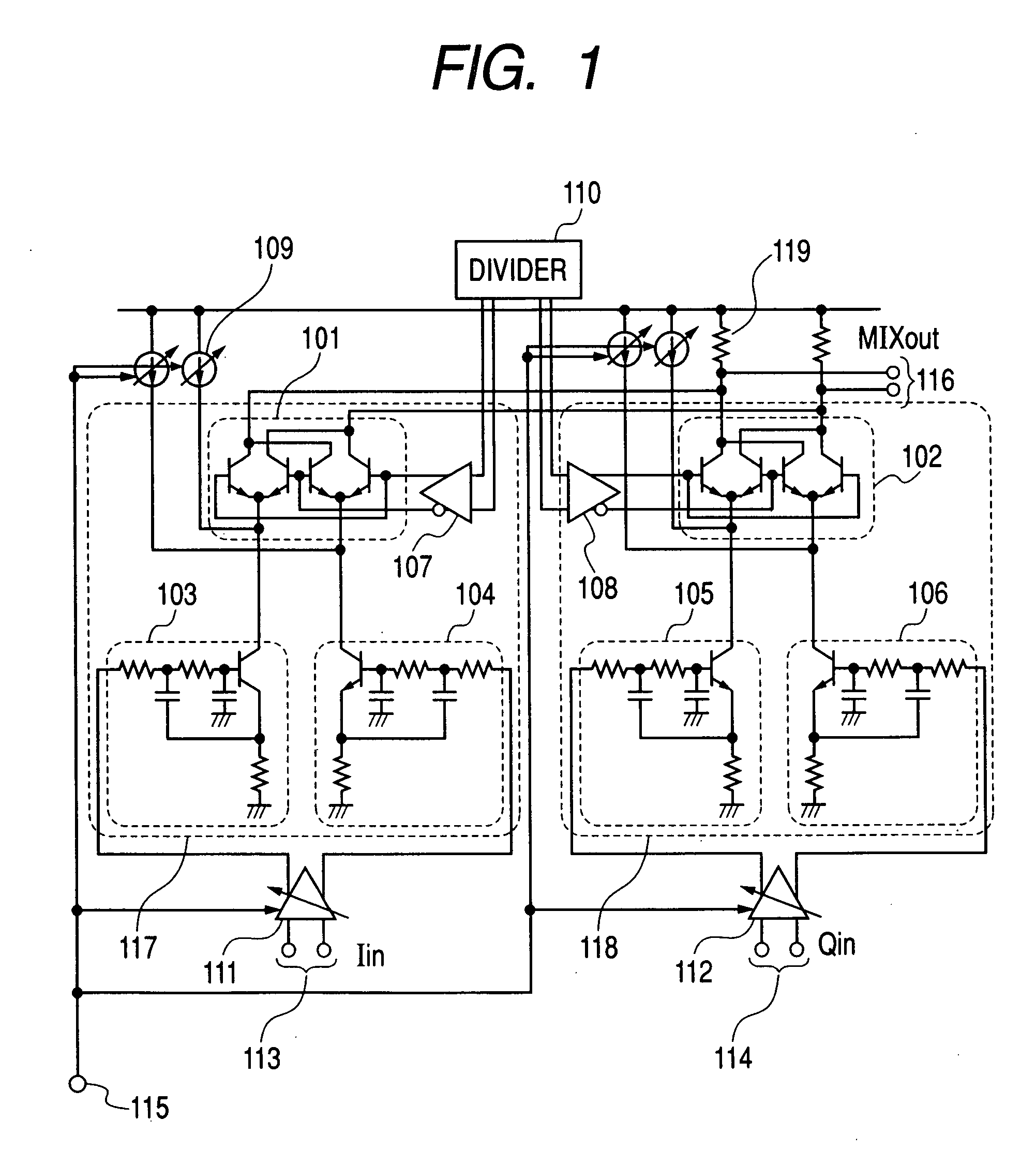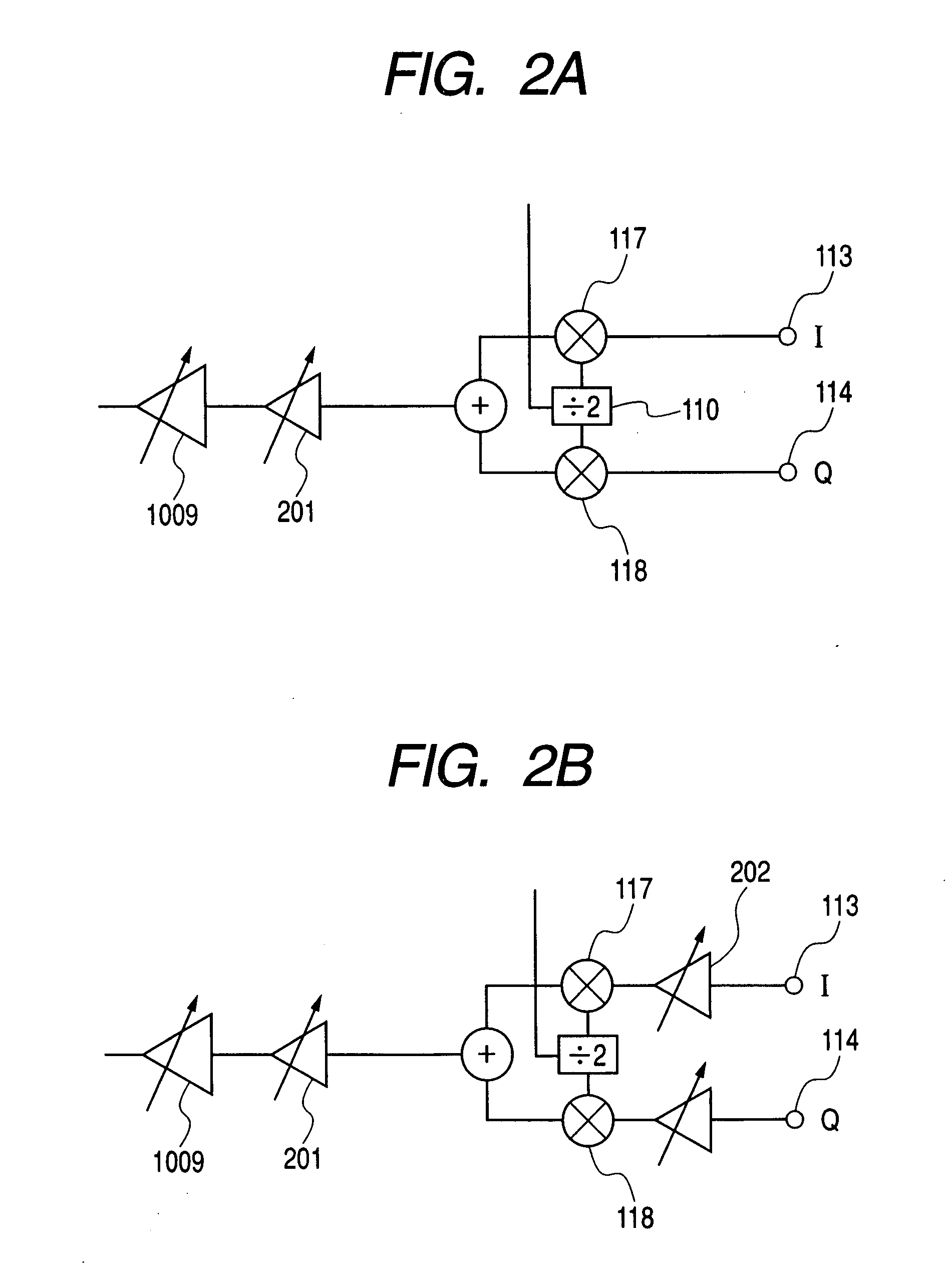Direct-conversion transmitter circuit and transceiver system
a transmitter circuit and direct-conversion technology, applied in the direction of automatic tone/bandwidth control, substation equipment, gain control, etc., can solve the problems of difficult to apply to a modulation system in which information is used, and achieve the effect of large variable width
- Summary
- Abstract
- Description
- Claims
- Application Information
AI Technical Summary
Benefits of technology
Problems solved by technology
Method used
Image
Examples
first embodiment
[0036] With reference to FIGS. 1 to 4, the description will be made of the first embodiment of the present invention. First, the description will be made of a variable gain method with reference to FIG. 2 when the direct conversion is applied to the transmitter circuit.
[0037]FIG. 2A is a view showing an example of circuit configuration when variable gain is realized by an orthogonal modulator having fixed gain and a high-frequency variable gain amplifier (RFGCA). The orthogonal modulator is composed of two mixers 117 and 118, and a divider 110 for generating two local oscillation signals having a 90° phase difference. To an I-signal input terminal 113 and a Q-signal input terminal 114, I-signal and Q-signal are applied respectively to convert into a high-frequency signal by the orthogonal modulator. The gain of the high-frequency signal converted is adjusted by a high-frequency variable gain amplifier 201.
[0038] The W-CDMA requests variable width of a signal level of 70 dB or high...
second embodiment
[0047] With reference to FIG. 5 to FIGS. 7A and 7B, the description will be made of a second embodiment according to the present invention. Although the current source which interlocks with the variable attenuator has been used in the first embodiment, in the present embodiment, bias of the mixer will be controlled by means of common mode DC voltage of the variable attenuator.
[0048]FIG. 5 shows circuit configuration of the present embodiment. Since I, Q both systems have the same configuration, detailed circuit configuration only concerning the I-system will be shown and the circuit configuration of the Q-system will be omitted hereinafter.
[0049] As in the case of the first embodiment, for the mixer 117, a Gilbert type mixer is applied, and the mixer 117 is driven by a secondary active filter circuit 501 for reducing an out-band noise level. The active filter circuit 501 is driven by a variable attenuator 502. The variable attenuator 502 attenuates a signal level, and also changes...
third embodiment
[0054] With reference to FIG. 8, the description will be made of a third embodiment of the present invention. In the present embodiment, mixers responsive to the signal level are connected in parallel, and are used by switching in accordance with the signal level, whereby it is possible to cope with reduction in carrier leak. FIG. 8 shows when two mixers 801 and 802 are connected in parallel. The mixer 801 is a high gain circuit, while the mixer 802 is a low gain circuit. The mixers 801 and 802 are constituted with size of transistor for constituting the circuit as n:1, and resistance as 1:n, and are set such that the driving current becomes n:1 at the same bias voltage. Even buffer circuits 803 and 804 for driving two mixer circuits are realized with similar transistor size ratio and resistance ratio.
[0055] These two mixers 801 and 802 are selected by an input circuit 809 at the previous stage. The input circuit is constituted by a plurality of selection circuits, each being compo...
PUM
 Login to View More
Login to View More Abstract
Description
Claims
Application Information
 Login to View More
Login to View More - R&D
- Intellectual Property
- Life Sciences
- Materials
- Tech Scout
- Unparalleled Data Quality
- Higher Quality Content
- 60% Fewer Hallucinations
Browse by: Latest US Patents, China's latest patents, Technical Efficacy Thesaurus, Application Domain, Technology Topic, Popular Technical Reports.
© 2025 PatSnap. All rights reserved.Legal|Privacy policy|Modern Slavery Act Transparency Statement|Sitemap|About US| Contact US: help@patsnap.com



